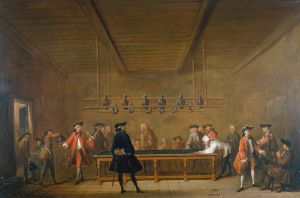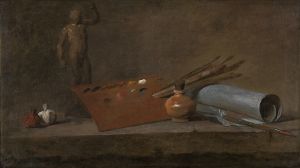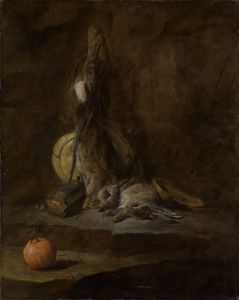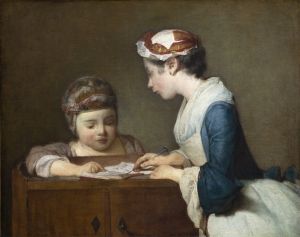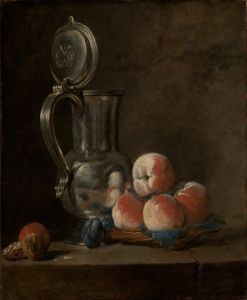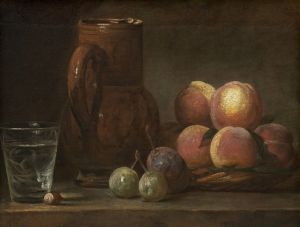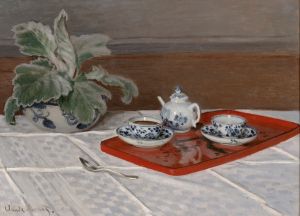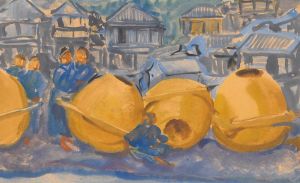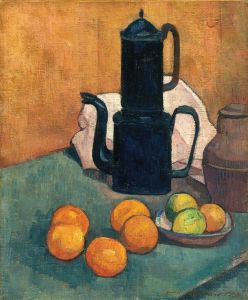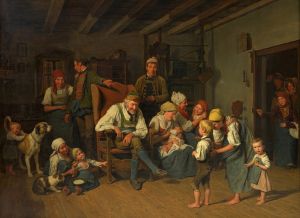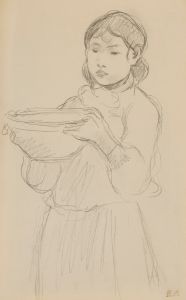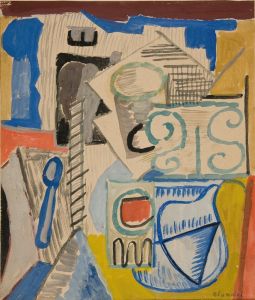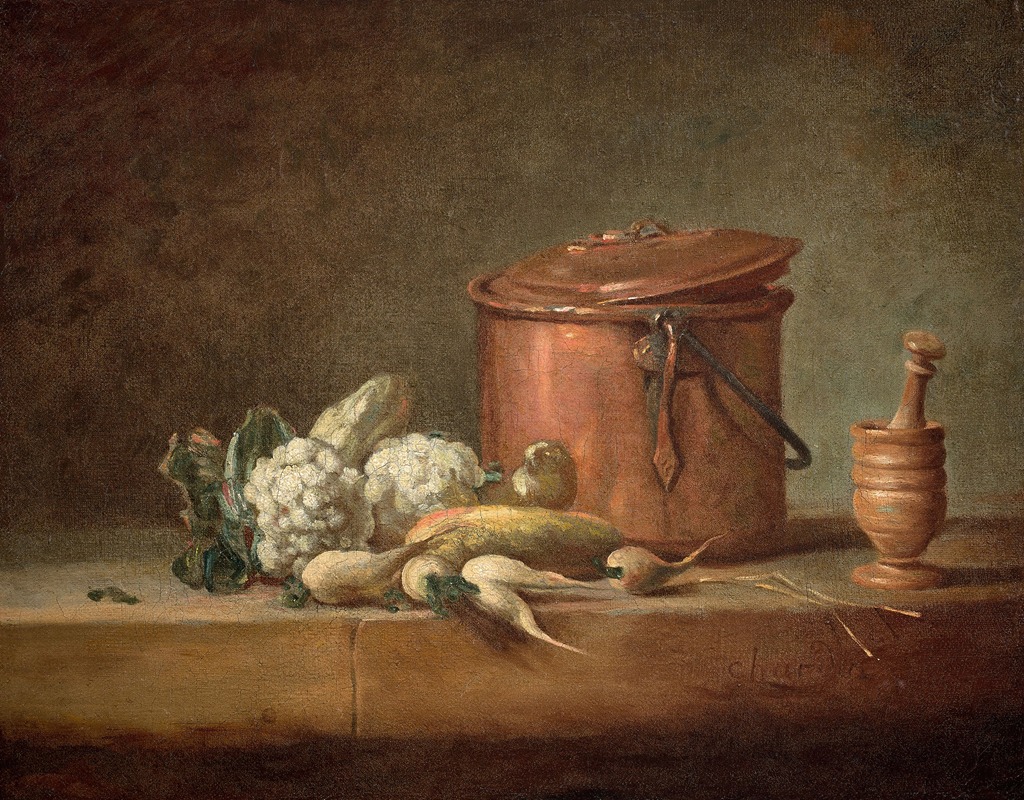
Marmite de cuivre, choux-fleurs et égrugeoir avec son pilon sur un entablement
A hand-painted replica of Jean Siméon Chardin’s masterpiece Marmite de cuivre, choux-fleurs et égrugeoir avec son pilon sur un entablement, meticulously crafted by professional artists to capture the true essence of the original. Each piece is created with museum-quality canvas and rare mineral pigments, carefully painted by experienced artists with delicate brushstrokes and rich, layered colors to perfectly recreate the texture of the original artwork. Unlike machine-printed reproductions, this hand-painted version brings the painting to life, infused with the artist’s emotions and skill in every stroke. Whether for personal collection or home decoration, it instantly elevates the artistic atmosphere of any space.
Jean Siméon Chardin, a prominent French painter of the 18th century, is celebrated for his still life and genre paintings that capture the quiet beauty of everyday objects and domestic scenes. One of his notable works is "Marmite de cuivre, choux-fleurs et égrugeoir avec son pilon sur un entablement," which translates to "Copper Pot, Cauliflowers, and Pestle with its Mortar on a Table."
Chardin was born in Paris in 1699 and spent most of his life in the city. He became a member of the Royal Academy of Painting and Sculpture in 1728, where he gained recognition for his ability to depict the textures and subtleties of ordinary objects with remarkable realism and sensitivity. His works are often characterized by their harmonious compositions, muted color palettes, and a sense of tranquility.
"Marmite de cuivre, choux-fleurs et égrugeoir avec son pilon sur un entablement" is a quintessential example of Chardin's still life paintings. In this work, Chardin presents a simple yet elegant arrangement of kitchen items: a copper pot, cauliflowers, and a mortar with its pestle, all placed on a table. The painting exemplifies Chardin's skill in rendering the textures and surfaces of different materials, from the reflective sheen of the copper pot to the delicate, organic forms of the cauliflowers.
Chardin's approach to still life was innovative for his time. Unlike many of his contemporaries, who often infused their still life paintings with allegorical or symbolic meanings, Chardin focused on the inherent beauty of the objects themselves. His paintings invite viewers to appreciate the quiet dignity and aesthetic value of everyday items, elevating them to the level of fine art.
The composition of "Marmite de cuivre, choux-fleurs et égrugeoir avec son pilon sur un entablement" is carefully balanced, with each element thoughtfully placed to create a sense of harmony and stability. The copper pot, with its warm, reflective surface, serves as the focal point of the painting, drawing the viewer's eye. The cauliflowers, rendered in soft, muted tones, provide a contrast to the pot's metallic sheen, while the mortar and pestle add a sense of solidity and grounding to the composition.
Chardin's mastery of light and shadow is evident in this work. He uses subtle gradations of tone to create a sense of depth and volume, giving the objects a three-dimensional presence. The play of light across the surfaces of the pot and the vegetables adds a dynamic quality to the painting, enhancing the realism and inviting the viewer to engage with the scene.
Throughout his career, Chardin remained committed to exploring the beauty of the mundane, and his works continue to be celebrated for their timeless appeal and technical excellence. "Marmite de cuivre, choux-fleurs et égrugeoir avec son pilon sur un entablement" is a testament to Chardin's ability to transform simple objects into subjects of profound artistic interest, capturing the essence of 18th-century French still life painting.





